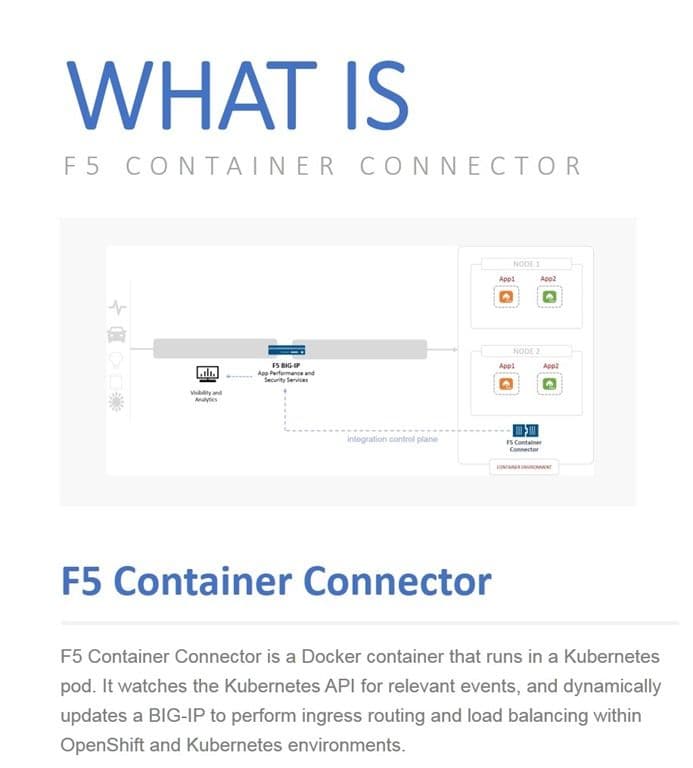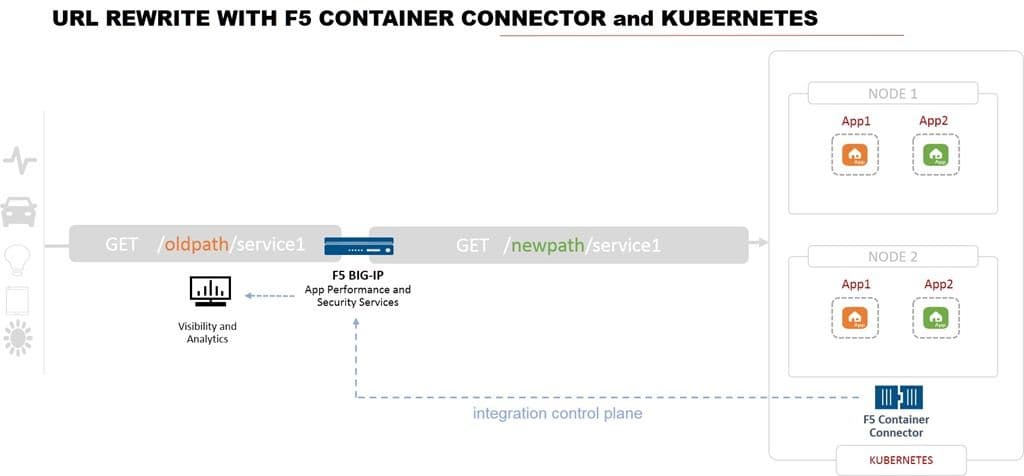
- Helm is the package manager for Kubernetes. Helm charts are an increasingly popular, declarative method of managing and deploying complex, containerized applications. F5 Container Connector (available on Github and DockerHub) now supports deployment using Helm charts.
- You can now use the rewrite Annotation to rewrite URLs on a BIG-IP for Kubernetes Ingress resources and OpenShift Ingresses and Routes. Documentation on using this capability is here.
The combination of open source and containers makes for a constantly changing environment. The no longer nascent technology of container environments is rapidly maturing in part thanks to its roots in open source. Those of us on the commercial and corporate side of software development have often relied on open source (80% of applications today are comprised of third-party libraries, many of which are open source) and containers are no exception.
With that rapid maturation comes rapid iterations of solutions like F5 Container Connector that bridge the routes between modern environments and traditional networking. That bridge is necessary to ensure that users (whether human or device) are able to access the APIs and applications begin deployed in container environments.
That’s because there are still challenges the Internet needs to address that are best met by a secure, inbound path from outside the organization to the inside. Limited IPv4 addresses is one, which constrains the number of public endpoints a business can present to the outside world for access. And even if that were resolved by adoption of IPv6, still security concerns would likely restrict entry points as a means to ensure that every request is inspected and vetted before being allowed deep into the data center.
That means that the use of traditional, scalable load balancing proxies to guard the gateway to containerized APIs and apps will continue for the foreseeable future. But that doesn’t mean these solutions – like BIG-IP – shouldn’t be as flexible and dynamic as the environments they are delivering requests to. That’s why F5 Container Connector exists; to ensure that changes within a container environment are rapidly communicated to the BIG-IP.
In this iteration of “what’s new in F5 Container Connector” we’re announcing support for rewrite Annotations to make it easier to rewrite URLs. Such capabilities are used for a variety of purposes, including migrating clients from one version of an API or app to another or solving an old URL path problem by automatically rewriting it to the new path that resolves.

Also new is support for Helm, the Kubernetes package manager. As container environments – and the applications deployed within them – continue to grow more complex in terms of systems involved it becomes infeasible to deploy and manage them manually. A more automated, declarative method of deployment and management is required not only to scale but to ensure all the pieces are in place for a given application.
Helm uses what it calls charts to package up an entire application and its components, ensuring consistent, repeatable deployments as well as simple rollbacks in the case of problems. F5 Container Connector now supports using Helm charts to seamlessly deploying and manage ingress routes on BIG-IP.
You can find the documentation for rewrite Annotations here, and the F5 BIG-IP ingress Helm charts on github.
About the Author

Related Blog Posts

AppViewX + F5: Automating and orchestrating app delivery
As an F5 ADSP Select partner, AppViewX works with F5 to deliver a centralized orchestration solution to manage app services across distributed environments.

Build a quantum-safe backbone for AI with F5 and NetApp
By deploying F5 and NetApp solutions, enterprises can meet the demands of AI workloads, while preparing for a quantum future.

F5 ADSP Partner Program streamlines adoption of F5 platform
The new F5 ADSP Partner Program creates a dynamic ecosystem that drives growth and success for our partners and customers.
F5 NGINX Gateway Fabric is a certified solution for Red Hat OpenShift
F5 collaborates with Red Hat to deliver a solution that combines the high-performance app delivery of F5 NGINX with Red Hat OpenShift’s enterprise Kubernetes capabilities.
F5 Silverline Mitigates Record-Breaking DDoS Attacks
Malicious attacks are increasing in scale and complexity, threatening to overwhelm and breach the internal resources of businesses globally. Often, these attacks combine high-volume traffic with stealthy, low-and-slow, application-targeted attack techniques, powered by either automated botnets or human-driven tools.
Phishing Attacks Soar 220% During COVID-19 Peak as Cybercriminal Opportunism Intensifies
David Warburton, author of the F5 Labs 2020 Phishing and Fraud Report, describes how fraudsters are adapting to the pandemic and maps out the trends ahead in this video, with summary comments.
